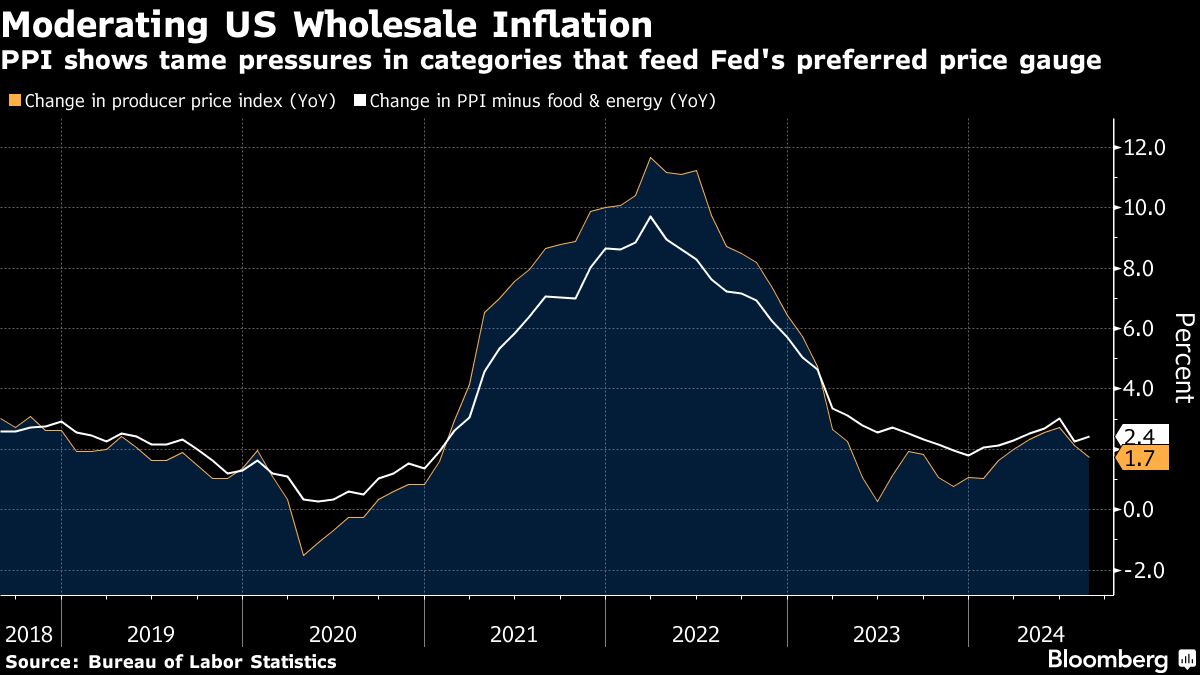
(Sept 12): US producer prices picked up only slightly in August after the previous month’s numbers were revised lower, and categories that feed into the Federal Reserve’s preferred inflation gauge were muted.
The producer price index (PPI) for final demand increased 0.2% from a month earlier following a flat reading in July, according to a Bureau of Labor Statistics report released on Thursday. The median forecast in a Bloomberg survey of economists called for a 0.1% gain. Compared with a year ago, the PPI rose 1.7% — the least since early in 2024.
A measure of producer prices excluding volatile food and energy categories climbed 0.3% in August from the prior month, and 2.4% from a year ago.
US stock indices opened little changed and Treasury yields rose as investors maintained bets on a quarter-point interest-rate cut from the Fed at next week’s policy meeting. Separate data showed initial filings for unemployment insurance rose slightly in the week through Sept 7.
The wholesale inflation data follow the more closely watched consumer price index, which showed underlying inflation accelerated in August on higher shelter costs. Still, with risks to the economy from cost pressures diminishing in recent months, Fed officials are projected to start cutting rates next week amid increased concerns about the durability of the labour market.
“The August PPI data provide more encouragement for the Fed that inflation has been tamed,” Paul Ashworth, chief North America economist at Capital Economics, said in a note. “The Fed can have greater confidence now that inflation has been tamed, but with housing cost inflation refusing to roll over, the bar to cutting interest rates aggressively remains quite high.”
The PPI report showed services costs increased 0.4%, with a rise in the cost of guestroom rentals cited as a “major factor” by the BLS. Prices of goods were unchanged last month, restrained by a sharp drop in energy costs.
Stripping out food, energy and trade, a less-volatile measure favoured by many economists, prices rose 0.3% for a second month. Compared with a year ago, the gauge rose 3.3%.
Fed’s measure
Economists also parse the PPI data for categories that feed into the Fed’s preferred inflation measure — the personal consumption expenditures (PCE) price index. Those were generally tame. The August PCE price gauge is due later this month.
Among those categories, a measure of portfolio-management fees, physician care and hospital inpatient care costs were all unchanged, while airfares fell 0.8% as carriers adjusted to cooler discretionary travel spending.
Costs of processed goods for intermediate demand, which reflect prices earlier in the production pipeline, fell 0.1%.
Uploaded by Felyx Teoh

